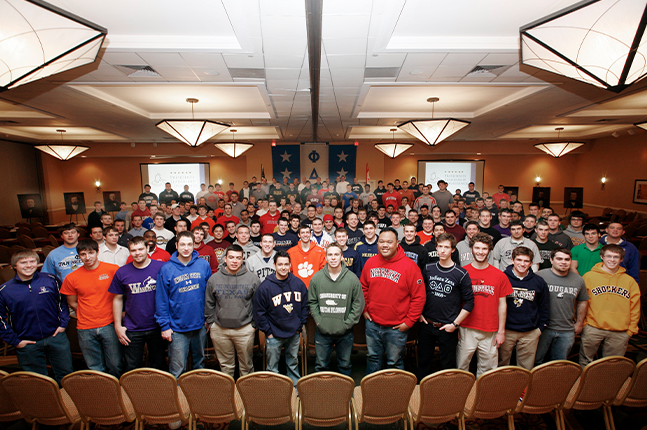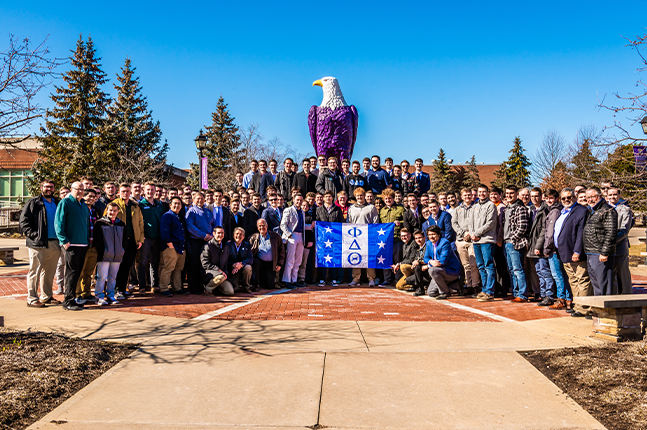By Jennifer Morrow, Communications Coordinator
While December 26, 1848, is meaningful for Phi Delts, many significant events preceded the Fraternity’s birth that year. The United States was growing as a nation. The United States and Mexico ended the Mexican-American War by signing the Treaty of Guadalupe Hidalgo on February 2, 1848. As a result, the US gained the Rio Grande as a boundary for Texas, US ownership of California, and a large area comprising roughly half of New Mexico, most of Arizona, Nevada, Utah, and Colorado. On May 29, Wisconsin became the thirtieth state. On August 14, President James Polk annexed the US-owned portion of Oregon and created the Oregon Territory. The Territory of Oregon originally consisted of the present-day states of Idaho, Oregon, and Washington and parts of present-day Montana and Wyoming.
Human rights advocates were creating turmoil philosophically in the US. Women were asking for the same rights as men. African Americans were working towards emancipation. Countries in Europe were in upheaval as citizens wanted to break the chains of serfdom. Famous men like Wyatt Earp were born, and others like sixth President of the United States John Quincy Adams, and first US multi-millionaire businessman, John Jacob Astor, died.
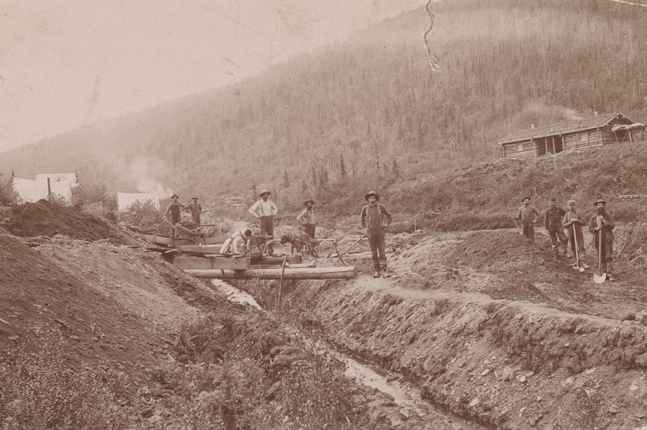
Gold Rush
While many may associate the Gold Rush with the “forty-niners,” the excitement began on January 24, 1848, when James W. Marshall found gold in Coloma, California. Marshall, a builder, was overseeing a sawmill’s construction on the American River that ran through Johann Sutter’s property when he spotted flecks of gold shimmering in the ditch he was inspecting. It wasn’t until August 19, 1848, that word of the gold strike reached the East Coast when the New York Herald newspaper ran a story about Marshall and his gold. President James Polk endorsed Marshall’s find on December 5, 1848, before Congress. This confirmation led to masses of people to head to California in 1849 and thereby earning the nickname of forty-niners. Even though Marshall was the impetus to the beginning of the big rush, he died penniless.
Men, women, emancipated slaves, freedom fighters from Europe, all with visions of gold in their pocket, came in search of the California Dream. Over 300,000 people came from around the world, with most fortune seekers from the US, but other large groups came from England, Australia, France, China, and Latin America.
Early miners may have had luck making their fortune, but recent research shows that savvy merchants made the most money, men like Levi Strauss who came west to sell dry goods to the prospectors.
The United States owned California, but it wasn’t even a territory when the rush began. With the sudden influx of population, it became a state in 1850 and, by 1856, had two US senators. The immigration of so many people led to the displacement of native peoples and clashes with prospectors. State agencies sent in militia to protect the miners, and it was a combination of fighting, disease, and starvation that led to a massive decline in the native population. The changes brought to the area known as California are enormous.
The Gold Rush influenced the global economy. Businesses in other countries sent goods for trading, and immigrant miners sent gold home. It led the US to drop silver as currency and only use gold as a standard. It financed the final western leg of the First Transcontinental Railroad (which connected California to the East Coast and transformed a journey that took many weeks or months into days). As California didn’t have enough military men to join the fighting, it sent gold to fund the Union Army during the American Civil War.
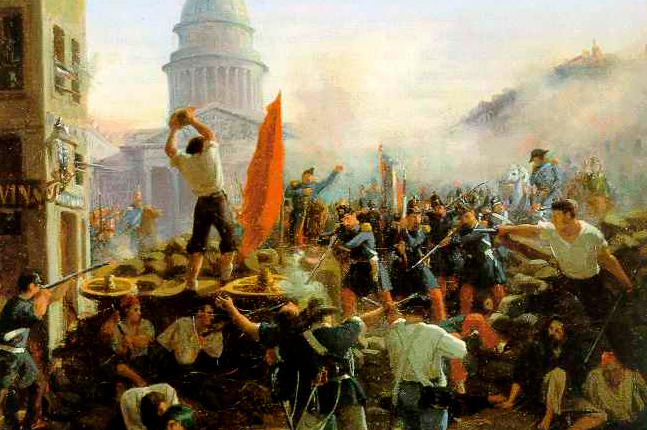
Revolutions of 1848
The years 1848–49 saw many uprisings throughout Europe when reformers, the middle class, and workers united in temporary coalitions. Many influencing factors led to these revolts. New technological advances stemming from the Industrial Revolution transformed the lives of the working classes. They began to express political awareness and become interested in new ideas expressed in popular liberalism, nationalism, and socialism. Many peasants and urban poor were particularly hard-hit during years of crop failures and, in particular, the blight of the potato in Ireland, Scotland Highlands, and Northern Europe. Food prices soared, and many starved to death or emigrated. Large-scale unemployment resulted in a lack of demand for manufactured goods, and many people destroyed industrial machines in protest.
Even though the revolutions did not bring about immediate change, over the next few decades, Austria and Hungary abolished serfdom, Denmark ended the absolute monarchy, and the Netherlands introduced representational democracy. Switzerland ended a twenty-seven-day civil war and transformed into a federal state after establishing a federal constitution influenced by both the US Constitution and ideals from the French Revolution. During this year of conflict, the ideals expressed even spread to Latin America, specifically in Columbia, Chile, Brazil, and Mexico.
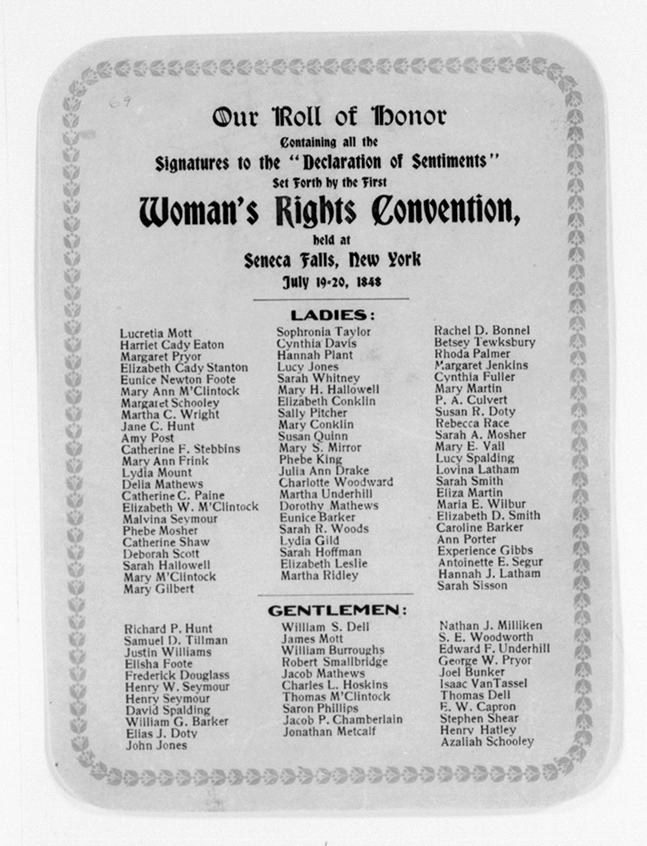
Seneca Falls Convention
The Seneca Falls Convention took place on July 19–20, 1848, and was the first women’s rights convention. The ideas that brought these women (and men) together were women’s social, civil, and religious rights. Many of these items discussed and resolved during those two days led to women’s suffrage. The Women’s Rights Convention took place at the Wesleyan Chapel in Seneca Falls, New York, with over three hundred people in attendance.
The five women who planned the convention were stout abolitionists and ardent supporters of women’s rights: Elizabeth Cady Stanton, Lucretia Mott, Mary M’Clintock, Martha Coffin Wright, and Jane Hunt. The main organizer of the event, Stanton, started off the convention with the following speech:
“We are assembled to protest against a form of government, existing without the consent of the governed—to declare our right to be free as man is free, to be represented in the government which we are taxed to support, to have such disgraceful laws as give man the power to chastise and imprison his wife, to take the wages which she earns, the property which she inherits, and, in case of separation, the children of her love.”
Two days before the convention, Elizabeth Cady Stanton and Mary M’Clintock held a planning session and discussed resolutions that should be discussed and presented for approval. Elizabeth worked with her husband, a lawyer, and wrote the Declaration of Sentiments, which they modeled on the Declaration of Independence. They came up with eleven grievances, one of which was the idea of allowing women the right to vote. Even though her husband was an abolitionist and worked for social justice reform, he did not want his name tied to the resolutions, so he left Seneca Falls before the convention began.
During the two days, the group discussed the eleven resolutions, and attendees voted on each one. They all passed initially except for the ninth issue, which was women’s suffrage: “Resolved, that it is the duty of the women of this country to secure to themselves their sacred right to the elective franchise.” Frederick Douglass was a strong proponent of women’s rights and spoke passionately on the topic. He said, “In this denial of the right to participate in government, not merely the degradation of woman and the perpetuation of a great injustice happens, but the maiming and repudiation of one-half of the moral and intellectual power of the government of the world.” His eloquence convinced a large majority to pass it.
Of the three hundred people in attendance, one hundred people signed the Declaration of Sentiments: sixty-eight women and thirty-two men. The energy created led to several conventions in New York, Ohio, Indiana, and Pennsylvania. But it wasn’t until the nineteenth amendment passed into law in 1920 that women were allowed the right to vote.
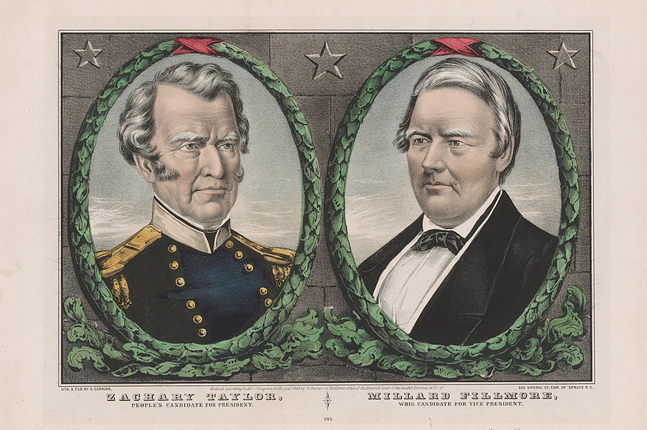
1848 Presidential Election
The 1848 presidential election was a presidential election of firsts. It was the first election held in the United States where every state voted on the same day, it was the first held on a Tuesday, and it was the first in which the two candidates that received electoral votes carried the same number of states. On November 7, Mexican-American War General Zachary Taylor defeated US Senator Lewis Cass. Taylor’s term officially began on Sunday, March 4, with the swearing-in ceremony the following day, March 5, due to religious concerns. He died the next year in office on July 9, 1850, and Vice President Millard Fillmore became the thirteenth president.


